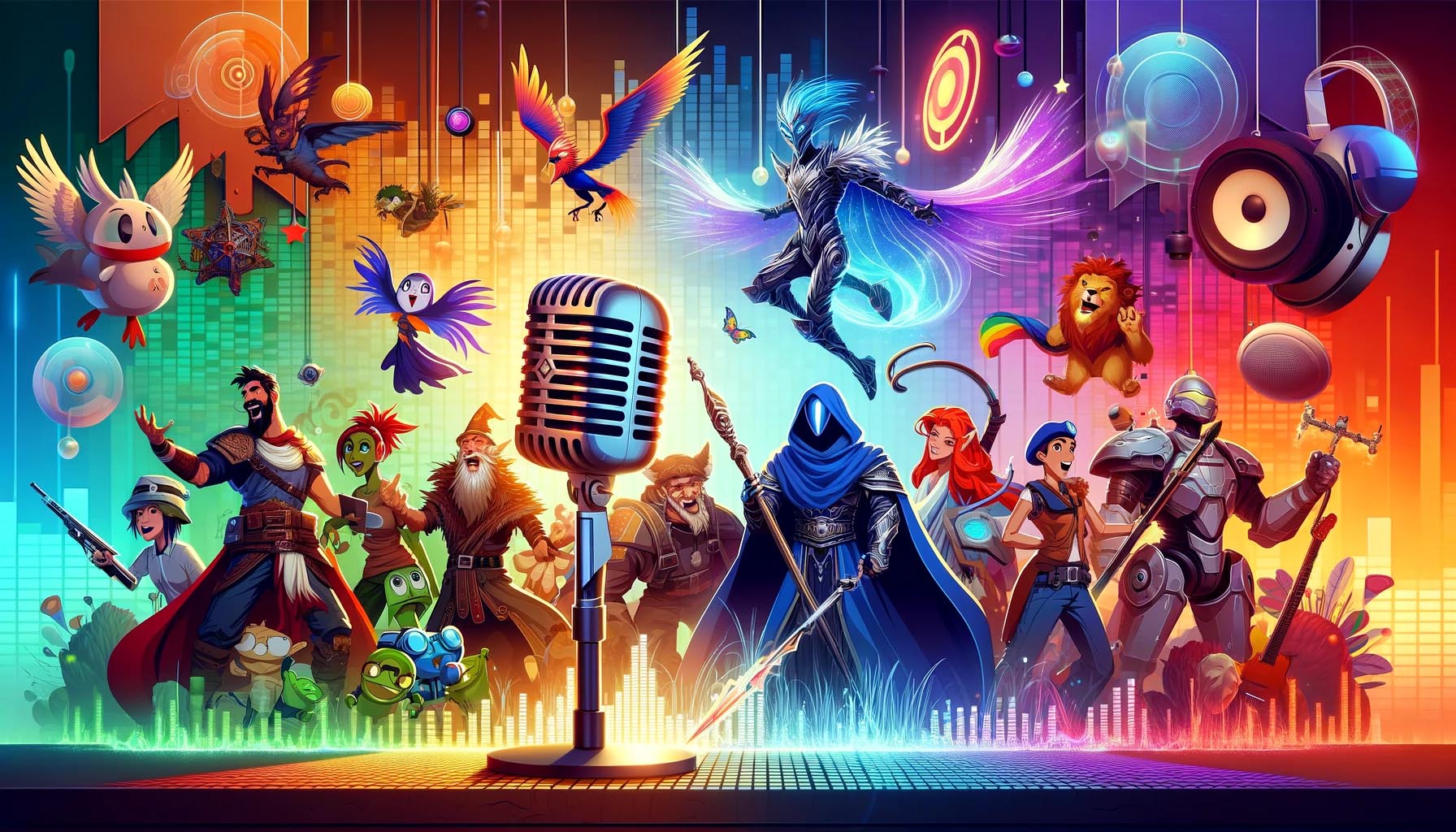The magic of animation and video games lies not just in their visuals but also in the vibrant characters brought to life by voice actors. These performers infuse personality into the pixels, creating memorable and engaging experiences for audiences of all ages. This article delves into the fascinating process of character voice creation in animation and video games, highlighting the skills required, the creative challenges faced by actors, and how this segment of the voiceover industry has evolved with technological advancements.
The Art of Character Voice Acting
Voice acting for characters in animation and video games is an art that demands a wide range of vocal skills and the ability to convey emotions purely through voice. Unlike traditional acting, voice actors rarely have physical sets or costumes to help them get into character. Instead, they rely on their ability to manipulate their voice to match the personality, mood, and backstory of their character.
For many voice actors, the process begins with understanding the character’s role in the story, their relationships with other characters, and their emotional journey throughout the game or show. This preparation involves collaboration with directors and writers to truly capture the essence of the character. The goal is not just to read lines off a script but to bring a consistent, believable character to life that resonates with the audience.
Challenges Unique to Voice Acting
One of the unique challenges in character voice acting is maintaining vocal health. Characters often require voices that are much different from the actor’s natural speaking voice. For example, voicing a character with a very high pitch or a growly, harsh tone can strain the vocal cords. Professional voice actors must master techniques to minimize damage and maintain their vocal health over long recording sessions.
Another significant challenge is delivering lines without physical cues or interaction with other actors. In many cases, voice actors record their parts individually, reacting to lines they often hear for the first time during their session. This requires a high degree of imagination and the ability to maintain energy and emotion in isolation.
Technological Advances in Voice Recording
The technology used in recording voiceovers for animation and video games has seen significant advancements. Modern studios are equipped with state-of-the-art soundproofing and recording equipment, allowing for crystal-clear audio capture that is essential for high-quality production. Software advancements also play a crucial role; digital audio workstations enable intricate editing and manipulation of sound to better align with the visuals on screen.
Moreover, with the advent of motion capture technology, actors now have the opportunity to perform their characters’ physical movements alongside their voices. This technology captures the physical performance of the actor and translates it into digital animations, providing a more integrated approach to character development. This not only enhances the realism of the character’s movements but also helps voice actors deliver more nuanced and synchronized performances.
The Role of Voice Directors
Voice directors are crucial in the process of creating character voices. They guide voice actors through the emotional landscape of the game or animation, ensuring that each line is delivered with the correct tone and timing. A good voice director can make the difference between a performance that feels flat and one that vibrates with energy and life.
Directors also have the task of ensuring consistency throughout the production. This is especially challenging in projects like video games, where a character might have thousands of lines, or animated series that span multiple seasons. The director must keep the character’s voice consistent across various contexts, from high-intensity battle scenes to quiet, emotional moments.
The Impact of Globalization on Character Voices
Globalization has significantly impacted voice acting, particularly in how characters are voiced for different markets. Dubbing and localization are now more important than ever, with studios looking to adapt their content for global audiences while keeping the essence of the characters intact. This has opened up opportunities for voice actors around the world to lend their voices to various characters in multiple languages, expanding the reach and relatability of the characters.
Voice Acting as a Career
Pursuing a career in voice acting requires more than just a good voice. It demands acting talent, vocal versatility, and the ability to take care of one’s vocal health. For those interested in this field, it is advisable to receive professional training, not only in voice acting but also in general acting techniques. Many successful voice actors also emphasize the importance of networking and continuously working on diverse projects to hone their skills and adapt to changing industry trends.
Voice acting for animation and video games remains a dynamic and exciting field within the broader voiceover industry. It offers creative challenges and rewarding opportunities for actors to become the voices behind some of the most iconic characters in entertainment. Whether it’s bringing to life a heroic figure in a blockbuster game or voicing a beloved cartoon character, the role of a voice actor is integral to the storytelling that captivates and entertains audiences worldwide.

